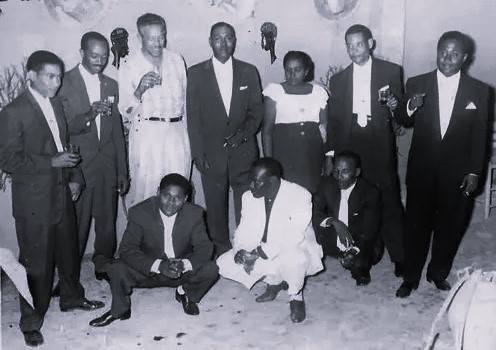In the mid-1950s, the Haitian musical landscape was dominated by foreign influences—a legacy of the 1949 Port-au-Prince International Bicentennial Exposition. Drummer Mario de Volcy described it as a “cultural invasion,” marked by the pervasive presence of Mexican, Cuban, and North American sounds on the airwaves and in nightclubs. Within this context, Haitian artists embraced these trends while nurturing the ambition to create a national music capable of competing on its own terms.
The idea was already taking sha

Si vous avez déjà créé un compte, connectez-vous pour lire la suite de cet article. Pas encore de compte ? Inscrivez-vous


